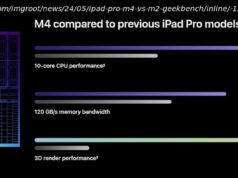At Micron’s 2017 Analyst Conference yesterday in Scottsdale, Arizona, Micron executives provided updates on the status and future plans for all their…
At Micron’s 2017 Analyst Conference yesterday in Scottsdale, Arizona, Micron executives provided updates on the status and future plans for all their major business units. While no new products were announced at this investor-focused event, their projections offer some insight about what’s in store for the memory industry in 2017 and beyond. With both NAND flash and DRAM in short supply globally, Micron’s projections of increasing production volume and decreasing cost per bit are welcome reassurance.
In 2016, Micron and Intel’s joint venture became the second manufacturer to sell 3D NAND flash in volume. That 32-layer first generation 3D NAND has reached mature yields that are comparable to that of planar NAND processes, and since last fall 3D NAND has accounted for a growing majority of Micron’s NAND output on a per-bit basis.
In 2017 Micron will be ramping up production of their 64-layer second generation 3D NAND, which is currently sampling. They promise “meaningful output” by the end of their fiscal year (December 2017). The 64-layer 3D NAND will increase the total GB per wafer by more than 80% and decrease the cost per bit of TLC by at least 30%.
With the second generation 3D NAND, Micron is shifting their strategy slightly by offering at least two different die sizes. We’ve previously heard about the 512Gb 64-layer 3D TLC part, but Micron will also be making a smaller 256Gb 3D TLC part. This die is planned to be the smallest 256Gb NAND flash die available from any vendor, at 59 mm^2 or 4.3Gb/mm^2. The smaller die is intended for the mobile market where the 512Gb part will be physically too large. Micron’s market share for NAND in the mobile market has been quite low, in part because they tend toward making large, high-capacity chips. The new smaller part will give them a chance to go after a much larger share of the rapidly expanding mobile storage market. The smaller part may also see some use in the SSD market for the smallest models in each family, to avoid the pitfalls of having too few dies to stripe data accesses across.
Micron is not ready to share many specifics of their third generation 3D NAND flash, but they plan to begin small scale manufacturing in the second half of 2017. They are estimating that GB/wafer will improve by more than 40%, suggesting that they’ll be moving to about 96 layers. They have not yet projected what cost per GB savings can be expected with the third generation 3D NAND.
Four bit per cell (QLC) NAND flash is also something Micron has worked on, but they do not yet have speficic plans for introducing it as a product.
Home
United States
USA — IT Micron 2017 Roadmap Detailed: 64-layer 3D NAND, GDDR6 Getting Closer, & CEO...






